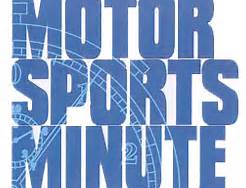Brickyard 400 Special No Matter How The Race Plays Out
- Updated: August 1, 2011
Charlotte, NC (August 1, 2011) – At the 300-mile mark of Sunday’s Brickyard 400, you could almost hear the howl from the Indianapolis Motor Speedway media center over the noise of the engines on the track. The wags that cover NASCAR Sprint Cup racing already had their columns written, most of them wailing about yet another boring race, the lack of passing or fans in attendance, or how lousy the free lunch had been.
One scribe even waxed how Sunday’s race was just another example of how NASCAR had eroded the long history of the track, that the top stock car division in the world never had any business competing on the hallowed ground that is Indy to begin with.
You’re kidding, right?
In an effort to be fair, we can agree that Sunday’s race at Indy wasn’t the most compelling, riveting, or exciting event we’ve seen in more than 50 years of watching NASCAR events. Then again, did it have to be?
Have we gotten to the point where every event has to be the ‘greatest ever,’ in front of the biggest on-site or television audience, to be noteworthy? Does every race have to feature manufactured, inflated lead change and passing statistics like Daytona and Talladega to be exciting?
The answer here is a resounding ‘hell no!’
The last time we checked, every NASCAR race regardless of what track it is at has ‘riding time’ – stretches where field strings out and there’s not much passing or action. It’s a product of how the races are structured, inherent in any event that is more than 100 miles in length.
In the case of NASCAR Sprint Cup racing, that’s all of them folks.
While that kind of ‘action’ may not be totally compelling or attract the biggest viewing audience, it does open up the door to other aspects of the sport. In the case of Sunday’s race, track position, pit stop execution and fuel conservation took center stage and at the end of the day, Paul Menard had done all three to perfection to win his first-ever NASCAR Sprint Cup race of any kind.
So what if the fastest car or the best driver didn’t win? Honestly, they rarely do in NASCAR or just about any form of racing. Lady Luck – and the ‘racing gods’ – run 1-2 more often than not.
That proved to be true on Sunday as Jeff Gordon, Matt Kenseth and Kasey Kahne were the class of the field. But several other teams challenged them and the racing fates rolling the dice, laying everything on the line. It was either win and forever be remembered for kissing the bricks, or crap out and coast into racing oblivion.
That’s very cool.
So why all the angst?
Frankly, seeing the strategy play out over the final 200 miles should have been extremely compelling to anyone who still appreciates that NASCAR is a team sport. Nobody had to run over anyone and there was no need to challenge anyone to a fight on pit road after the event needed to make this a memorable event or interesting to watch.
It was about who had a fast car, the winning strategy and frankly – the stones to put it all on the line – in an effort to grab one of the most noteworthy prizes in all of motorsports.
Meanwhile, a change to the NASCAR point system where the top-six drivers are separated by a mere 16 points made every one of those hard-to-come by positions Sunday even more important. On the bottom end of the point’s scale, the race to make the Chase is even more closely contested, especially after Menard’s win at Indy.
This is good stuff and if all of that didn’t hold your attention for 400 miles, then you probably aren’t as big a fan – or in the case of some media – as knowledgeable about the sport as you think you may be.
All the grousing about no passing, aero push, a crowd of ‘just’ 120,000 fans, or the lousy slick meat sandwiches in the media center really doesn’t mean much here. This is still Indy. It’s the epicenter of American motorsports. Even launching a hot air balloon – which they did to open the place in 1909 – is a major event at here.
That’s why NASCAR races at Indy – no matter who wins or how they play out – are always intriguing and important. As someone who got to cover the Indy 500 for years as a reporter and one of many who was on the line of bricks for the group photo prior to the start of the inaugural Brickyard 400 in 1994, I can tell you that working at or attending a race Indy is always special.
So was Sunday’s 18th-Annual Brickyard 400, regardless of what anybody else wants you to believe.
John Close covered his first NASCAR race in 1986 at Bristol. Since then, Close – a former Associated Press newspaper sports editor – has written countless articles for numerous motorsports magazines, trade publications and Internet sites.
His Close Calls column appears each week on www.CloseFinishes.com, www.MotorsportsAmerica.com and www.RacingNation.com.
Close has also authored two books – Tony Stewart – From Indy Phenom To NASCAR Superstar and NASCAR Craftsman Truck Series – From Desert Dust To Superspeedways.
Close is a weekly guest every Thursday at 1 p.m. Eastern on Tradin’ Paint on NASCAR SIRIUS Channel 90.
You can follow John Close on Twitter @CloseFinishes and on Facebook at John Close.
Be sure to visit John’s website – www.closefinishes.com




![Porsche Fabcar crosses the finish line. [Robert Madara photo]](https://racingnation.com/wp-content/uploads/2023/11/FabcarFinish-108x70.jpeg)

![USF2000 Pro driver Lindsay Brewer. [Eddie LePine Photo]](https://racingnation.com/wp-content/uploads/2023/06/IMG_8825_2-108x70.jpg)